Transcript
Greetings, today I will discuss the Conquistadors that conquered much of South and Central America for the Spanish. The opening chapter of my book, The Early American Explorers, delves into this topic.
The Early Explorers contains short biographers of many of the early explorers that penetrated the interior of the future United States during the period of the 1500’s through the 1600’s. The earliest explorers were the Spanish conquistadors and missionaries that extended the rule of Spain into the region that would become the United States southwest.
Conquistadors and Missionaries
Dispute Between Spain and Portugal
Columbus had stopped to consult with Portugal's John II before returning to Spain on his first voyage. Feeling threatened by the Spanish sponsored voyage, the Portuguese king had dispatched a letter to King Ferdinand and Queen Isabella warning that all lands south of the Canary Islands belonged to Portugal, as stated by the Treaty of Alcáçovas.
Treaty of Alcáçovas
Spain and Portugal had fought a war, known as the War of the Castilian Succession, in which the Portuguese defeated the Castilians in the mostly inconclusive war in the 1478 Battle of Guinea. The Treaty of Alcáçovas ended the war. The Treaty gave the Portuguese control of the Azores, Madeira, the Cape Verde islands and "lands discovered and to be discovered…and any other island which might be found and conquered from the Canary Islands beyond toward Guinea." The Castilians retained control of the Canary Islands, which they had begun colonizing in 1402. The treaty was noteworthy as it was the first treaty that bestowed upon European powers the authority to create spheres of influence in overseas territories without input from the natives living there.
Christopher Columbus Changed the Situation
King John's letter to the Spanish monarchs alarmed them, as they did not have sufficient naval forces in the Atlantic to back up the claims that Columbus had made in their behalf. They decided to consult with Spanish-born pope Alexander VI to issue a decision on the new discoveries.
Treaty of Tordesillas
The Treaty of Tordesillas divided the New World between Spain and Portugal. It divided it along a line drawn up along a line drawn from pole to pole that passed about 320 miles west of the Cape Verde Islands. Spanish-born pope Alexander VI had issued a papal bull that established this line. The two countries agreed to this on June 7, 1494. Spain received the lands to the west of the line, Portugal to the east. The Spanish King Ferdinand and Queen Isabella commissioned Columbus to return for a third voyage. Part of his mission was to try to discover the extent of their new possessions.
Spain ratified the Treaty on July 2, 1494, Portugal on September 5, 1494.
Spanish Conquistadors
The Age of the Conquistadores lasted about three decades and left an indelible mark on South, Central and North America. The Conquistadors, literally "conqueror," in Spanish, conquered and explored large tracts of territory in all three continents. The reader may wonder what sort of men made up this compelling force, what motivated them, what was the structure of their armies and what sort of weapons they used. This section will attempt to answer those questions.
Who They Were
A conquistador army was not part of the Spanish military, it was an independent force authorized by the Spanish king and queen. The men that comprised a conquistador force came from a wide variety of backgrounds. Many were military veterans, released from service when Spain reduced the size of its army after the Reconquista and other wars. Others had non military backgrounds, having been sailors, fishermen, and nobles in the past. Many poor men whose future was not promising also enlisted in the conquistador force. Recruits received education in reading, writing, math and languages. They learned military arts from their officers and, with luck and valor in battle, could gain election as officers from their peers. Spanish law forbade single Spanish women from settling in the new lands, thus most women that accompanied a Spanish force would be in company with their husbands. Many of the soldiers would thus marry native women and settle in the new lands. Spanish law also forbade anyone that was not Spanish from immigrating, thus men of other nationalities often changed their name to a Spanish one to qualify for enlistment. Even though the Spanish government encouraged these expeditions, they did not finance them. Generally, a group of former military types would gather, form a company and organize the expedition, picking up other recruits as needed. They financed the expedition themselves. Most conquistadores did not gain vast riches through these expeditions. Many times, the Spanish government took over the administration, and tax revenue, of the lands they conquered, forcing them to continue exploring, and conquering, new lands.
Motivation - Gold and Riches
The quest for gold fueled the motivations of the conquistadores. Europe had very little native gold. Kings needed gold to pay their armies. Spain's smaller population and inferior resources made it more dependent upon foreign mercenaries than their traditional rivals of France and Italy. The conquests of the conquistadores and the discovery of gold in the Inca and Aztec empires led to Spain becoming the leading holder of gold in Europe. Historians estimate that somewhat less than 100 tons of gold made its way across the Atlantic from the New World to the old within 60 years after Columbus' last voyages. The Spanish government effectively confiscated this rich supply of gold when they replaced the conquistadors as leaders of the various regions with Spanish bureaucrats. This action led the conquistadores to travel further into the interior in search of more gold.
The Mission System of Spanish Colonization in the United States
As the conquistadors conquered the huge empires of South and Central America, Catholic missionary priests and friars accompanied the solders as they explored and conquered. After the conquistadors had completed the subjugation of the natives, the missionaries moved in to convert the to Christianity and educate them.
The System
The system that evolved consisted of three basic elements, the garrison, the mission and the town hall. Spanish soldiers garrisoned the fort, keeping order and protecting the territory. Priests and friars inhabited the mission building where they instructed the natives in the ways of Catholicism. The missionaries taught the natives how to raise crops, livestock and instructed them in many other trades. The town hall served as a meeting place where residents could gather to voice their needs and grievances. This system continued as the Spanish moved into the region that would become the United States southwestern states of Arizona, Texas, New Mexico, California and others. Many of the oldest towns in these states began as Spanish missions.
ou can find out much more about the conquistadors in my book, The Early American Explorers. Learn about the weapons they carried as well as short biographies of many of these men like Juan Rodriguez Cabrillo, Panfilo de Narvaez and Hernando de Soto. French explorers Louis Joliet, Jacques Marquette,
ane René Robert Cavelier Lasalle are just a few of the explorers covered in the book.
The book is available on Amazon, Apple, Barnes and Noble and many other online book sellers. You can also purchase it direct from me on my web site www.mossyfeetbooks.com.
Residents of southeastern Indiana can find it, as well as many of my other 130+ titles at the Walnut Street Variety Shoppe on George Street in Batesville.
I hope you enjoyed this podcast and thank you for listening.







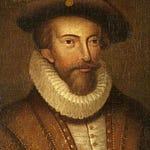
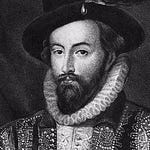
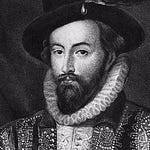

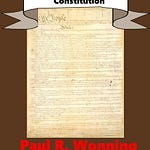

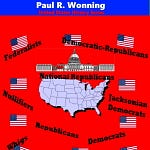
Share this post